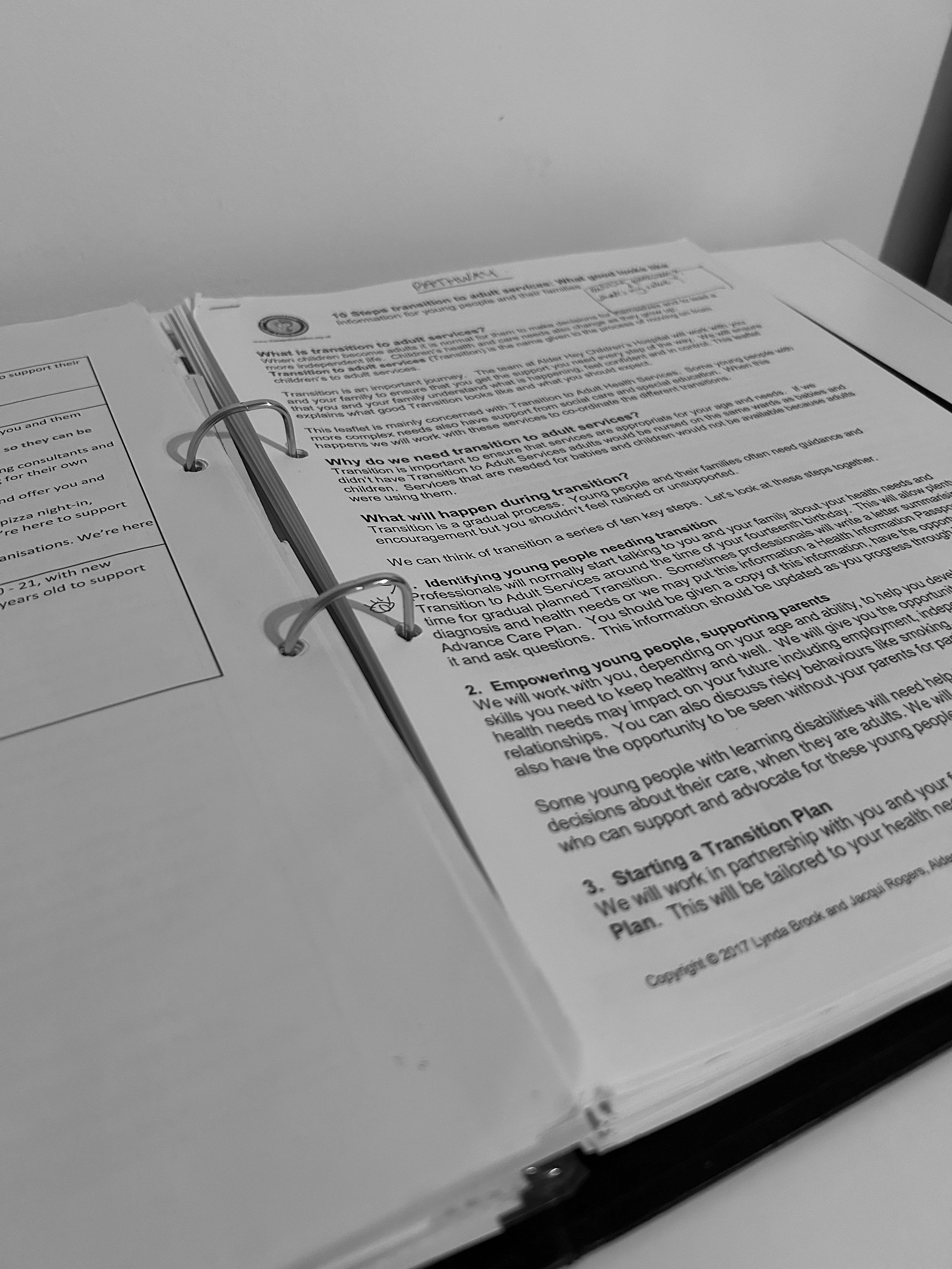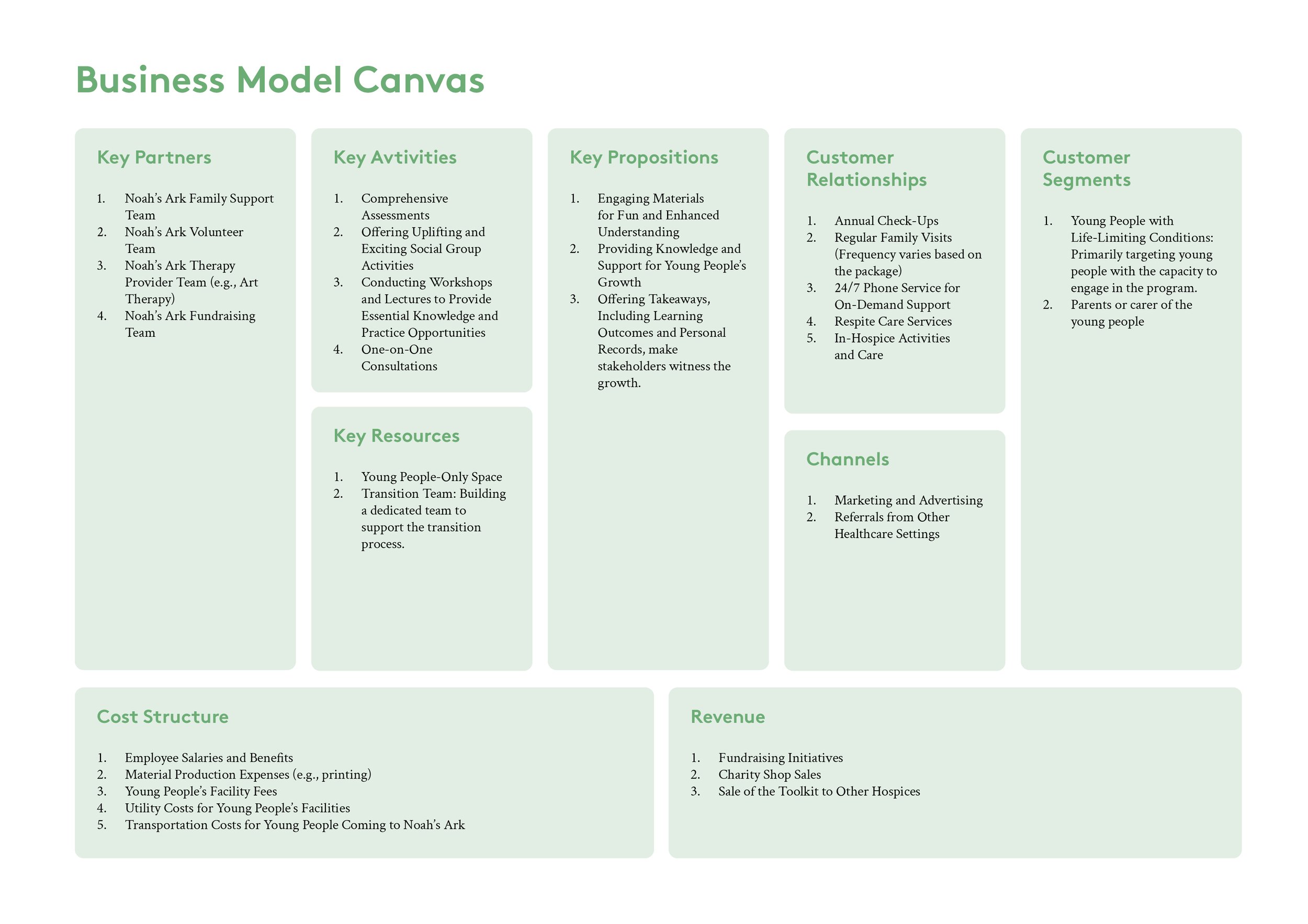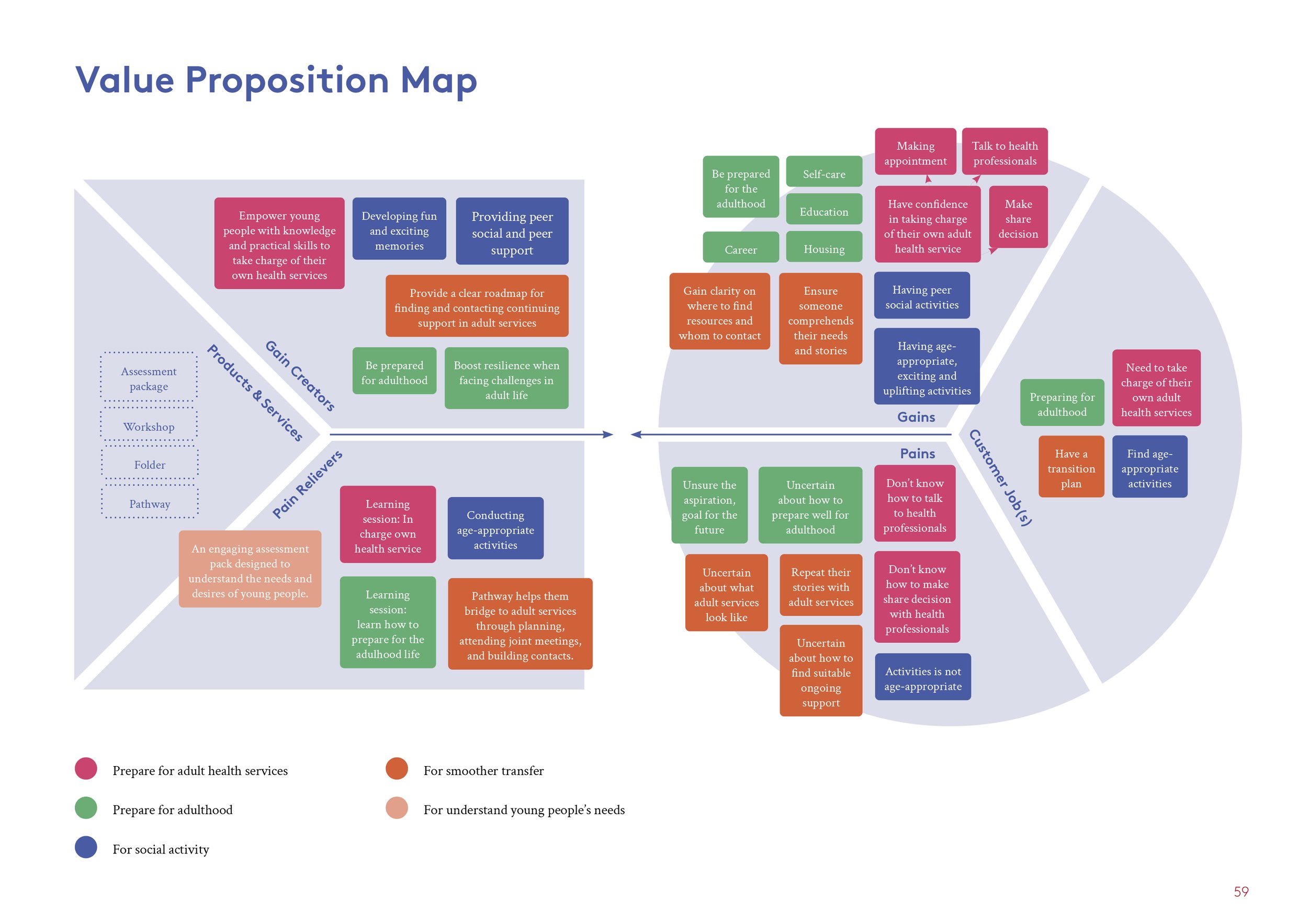
May-November, 2023, London, UK
Navigation
Project Overview
Service Design for Children's Hospice in the UK, Barnet Area. This is a six-month project primarily worked on with the Noah’s Ark Children’s Hospice Transition Department, also in cooperation with five other Children’s Hospices across the UK. The project aims to assist young people aged 14-25 with life-limiting conditions to transition more effectively from children’s hospice care to adult services and adulthood.
Background
As medical advancements enable more young individuals with life-limiting conditions to live longer, potentially into adulthood, the UK's hospice system has yet to adequately accommodate this demographic. The current structure lacks transitional support, hospice workers are often unaware of the specific needs of young people, and the services provided are not tailored to their age group. Consequently, young individuals may lack the confidence or knowledge to navigate adult services and adulthood, while parents are understandably anxious about the transition process.
HMW & Problem Statements
Amidst the numerous challenges identified in the research process, a pivotal point of action is: How might we empower young people with life-limiting health conditions when facing the transition to move from children’s hospice to adult services and adulthood?
How can we enhance hospice awareness to view young people holistically rather than focusing solely on their condition?
How can we make the process of understanding their needs, aspirations, and preferences more engaging?
How can we create a space for young people to acquire knowledge and practical experience, empowering them to navigate the changes in adult services and adulthood?
How can we enable parents to acknowlodge the growing up of young people, motivating themselves to navigate adult services and adulthood?
Solution
A service package consisting of an engaging approach to understand young people’s needs, preferences, and aspirations. This is followed by a space providing young people with knowledge and practical opportunities, concluding with a folder recording all information and memories. All elements are set within the context of the transition.
Project Timeline
Discover
Desk Research
By reviewing the existing research report, I identified stakeholder pain points, such as young people’s self-decision making challenges and hospital staff shortages. By assessing existing service materials, I found that most focus on evaluating transition gaps with generic frameworks and assessment forms.
Research Journey Map
The research activity was conducted in five hospices across the UK, aiming to identify common issues and enhance sample diversity.
Shadowing in Hospice
To enhance my understanding of the workers' tasks, I shadow them during their daily activities, which may involve visiting their families. This allows me to comprehend the challenges they face during their workflow and facilitates communication with their parents.
Stakeholder Map
Young People and Parents as end user, and hospice workers as main service provider are my main stakeholders.
Stakeholder Interview
DiscoverInterviews were conducted across 5 hospices involving 13 professional workers, as well as 2 families consisting of 2 parents and 3 young individuals. The interviews utilized semi-structured questions.
Workshop
3 workshops were held across three hospices involving 9 hospice workers. Additionally, one workshop was conducted with 3 parents.
Define
Insights
01/ The information gathered by hospices primarily focuses on medical aspects than the young people’s needs, preferences, and aspirations due to a lack of awareness in perceiving young people beyond their medical conditions.
02/ Transition services currently lack a stage that offers personalized knowledge acquisition and practical opportunities.
03/ Parents would be more likely to feel motivated if they could see the hope that their young people will become more powerful and independent.
Persona
User Journey
Persona
Story Board
Develop
Co-develop with different stakeholders
Key Takeaways from the Co-Development Process:
Hospice preferences encompass materials enriched with visual elements and gamification-style tools, such as card games or block games.
Young people’s desires include: 1) Access to informative resources like a transition guidebook. 2) A consolidated information folder. 3) The creation of spaces tailored for teenagers or the organization of sleepover weeks that combine fun and educational elements.
While parents didn’t provide specific ideas, they expressed the hope that the transition process should be an enjoyable and engaging experience.
Research through Design
Using Research Through Design, I created four prototypes that explored different strategies for collecting and sharing information among hospice staff, young people, and parents. Collectively, these early ideas illuminated important considerations around engaging visuals and activities, balancing practicality with ambition, and addressing concerns about privacy and manageability. The prototypes showed that visually appealing materials increased willingness to participate, workshop-based approaches appealed to those wanting peer interaction, digital solutions prompted discussions on feasibility and data concerns, and a simpler “folder” format reassured stakeholders seeking tangible resources. These findings ultimately guided a more refined, user-focused final toolkit.
Ideation
Co-creation with hospice
I carried out a three-part co-creation process centered on content development in three key areas: (1) expanding the focus to young people’s broader needs beyond medical care, (2) establishing a practical roadmap for integrating new solutions within existing hospice workflows, and (3) using positive, inclusive language. This approach not only laid a solid groundwork for the final design but also prompted hospice workers to brainstorm meaningful innovations and reimagine how they deliver care.
Prototyping
I created prototype materials centered on an assessment package and a workshop guide, then tested these with hospice staff, young people, and parents. Their feedback highlighted improvements in session length, clarity of instructions, and the wording used in worksheets—while also underscoring the strong appeal of engaging visuals and interactive activities. Hospice workers particularly valued the workshop concept, found the folder idea useful, and offered suggestions regarding color choices and phrasing. Overall, this iterative testing process yielded positive results and valuable insights, solidifying the potential of the new materials to enhance current practices.
Value Proposition Map
User testing
Getting feedback from workers
Delivery
Assessment Package
The materials comprise four parts: Independency level / Understanding your health condition / Exploring through working / Love & Aspiration
Noah's Ark Youth Group (Learning Session)
Noah’s Ark Youth Group serves as an educational and supportive space for young individuals. It offers a range of activities, including workshops, discussion groups, lectures, and more. The club is dedicated to helping young people acquire essential knowledge for transitioning to adult services and adulthood, while also providing practical learning opportunities.
My Folder
My Folder is a binder that young people can take away when they discharge from the children’s hospice.
Analysis
“It has been a pleasure working alongside Hanting and to have her attend Noah’s Ark Children’s Hospice over the past few months, she has been very thorough in her research, open to input and has really tried hard to listen to what hospices need and want with regards to tools and resources..”
— Rebecca Taylor, Transition Services Co-Ordinator in Noah’s Ark Children’s Hospice



























